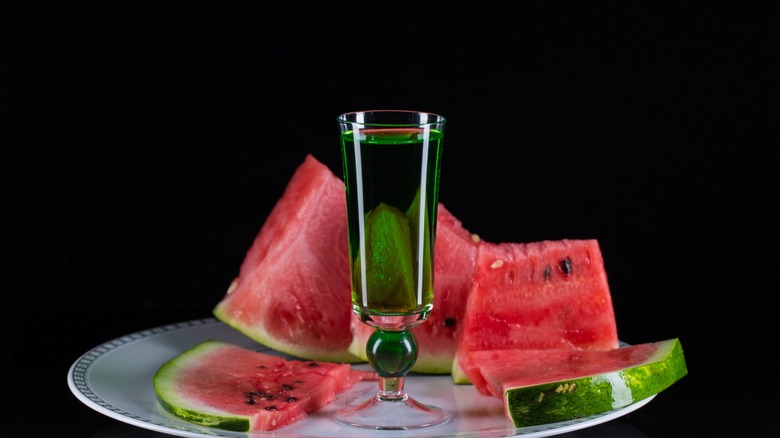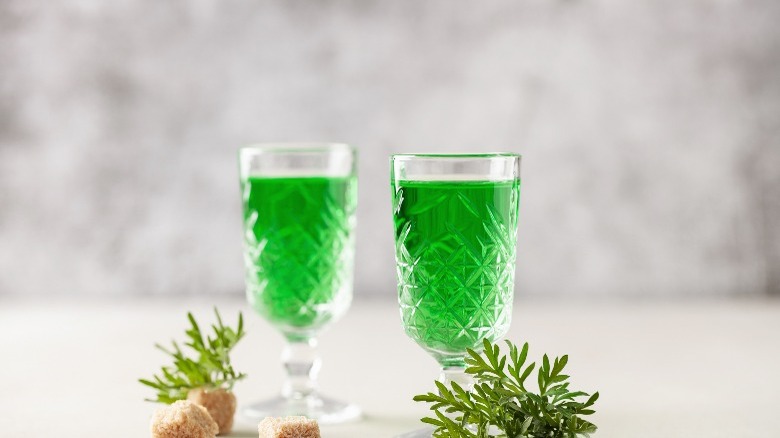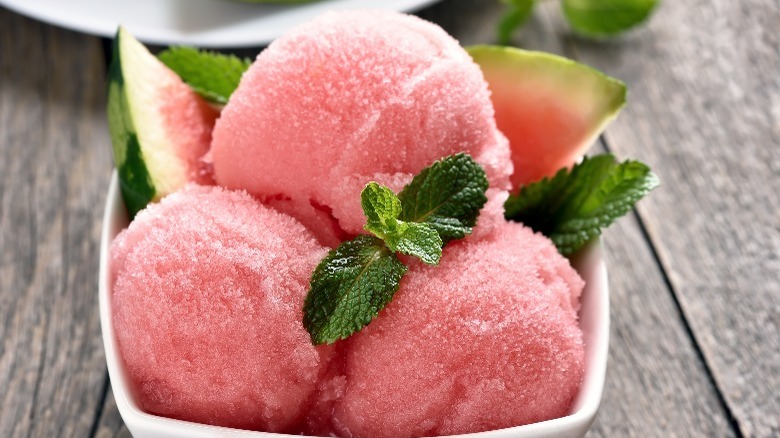Spike Your Watermelon With Absinthe. What Could Go Wrong?
Few liquors have generated as much fear and awe as absinthe, otherwise known as "The Green Fairy," which can purportedly lead to its drinkers seeing pink elephants. The truth is that the emerald alcohol isn't nearly as toxic or psychedelic as the legends would have you believe, and the anise-flavored notes of the booze pair quite well with the mild, refreshing taste of watermelon on a hot summer day. The recipe works especially well in sorbet form, but feel free to load a chilled watermelon up with absinthe and see what happens.
Not everyone cares for absinthe, but those that do are loyal followers of jade juice. The liquor's naturally licorice-like taste and aroma is extremely unique and acquired, landing somewhere daringly between sweet and spicy. Anethole, the naturally occurring substance that contributes most directly to the very specific flavor of licorice, anise, and fennel, gives absinthe a similar quality. Those who enjoy exploring wider palettes may find the tingly sweet kick of absinthe to be a fascinating and, when watermelon is applied to the equation, refreshing odyssey.
A brief history of absinthe
Although absinthe is known as an overproof liquor with an alcohol percentage above 50%, its infamous reputation probably comes from the fact that it was a favorite drink of counter-culture artists and bohemians. Vincent van Gogh and Ernest Hemingway, troubled geniuses in their own right, were both known to be fans of the liquor. It was thought that wormwood, one of the ingredients that absinthe alcohol is distilled with, alongside anise and fennel, was a poisonous plant that caused hallucinations. In reality, unregulated methods of cheap production meant that toxic additives were making their way into absinthe distillation. In fact, wormwood is also one of the ingredients in the less controversial vermouth.
Absinthe's notoriety led to a ban on the liquor in several countries including Belgium, France, the United States, and its homeland of Switzerland in the early twentieth century. However, The Green Fairy is now legal in most of these places, although it can be difficult to spot in liquor stores. Plenty is available to purchase through online retailers, however, so all you need to pick up at your local grocery store is watermelon.
What to do with absinthe and watermelon
St. George Spirits, the first legal distiller of absinthe in the United States since it became legal in 2007, calls the liquor a "tongue-numbing drink." That stimulating, spicy flavor pairs well with the cool, hydrating sweetness of watermelon. Monica Carbonell at Liquid Culture has a recipe for a watermelon absinthe martini that also incorporates gin and shochu, although she admits that she doesn't enjoy absinthe as much as others. Still, she calls the mix "one of those pairings that always works," so it wouldn't be incredibly daring to stick to just those two mixings alone.
In addition, Michelle Tchea at VinePair suggests brewing the concoction in a sorbet, bringing the refreshing summer beverage to its natural conclusion. She points out that the alcoholic content of absinthe provides a natural way for frozen watermelon to solidify the treat when the concoction is blended. Once you've added absinthe to your watermelon, you can also try adding watermelon to your absinthe, as is the suggestion of Toronto's The Hole in the Wall. The bar/restaurant pickles watermelon in absinthe and limoncello and mixes the result with halloumi cheese and mint in an incredibly experimental salad. Mint, by the way, also works wonders in a straight-up absinthe cocktail due to its similar cooling effect on the tongue. Gone are the days of The Green Fairy hiding in the shadows, and hoorah to the green-and-pink flag of the watermelon-absinthe combo.



